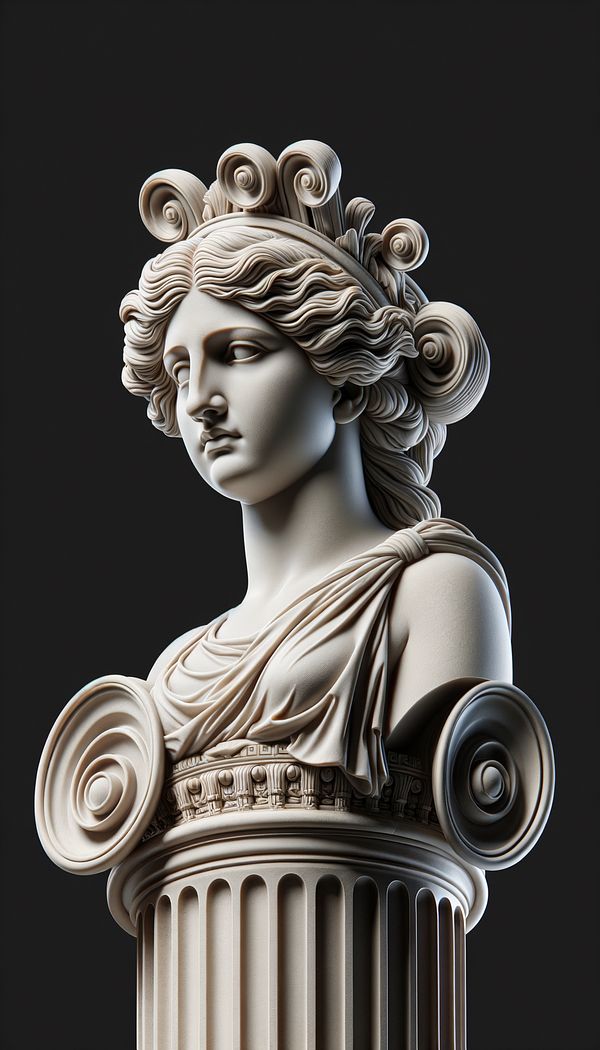What is a Caryatid?
A sculpted female figure serving as an architectural support.
Description
A Caryatid is an architectural element originating from ancient Greece, featuring a sculpted female figure that serves as a support or column for entablatures, balconies, or other structures within a building. Unlike ordinary columns, Caryatids are highly decorative and are carved with meticulous detail to resemble a woman standing in an elegant pose. These figures often appear to effortlessly support the weight above them, showcasing not only structural functionality but also significant artistic and cultural value.
The use of Caryatids can be traced back to the 5th century BCE, symbolizing strength, beauty, and the essential role of women in society and mythology. Each Caryatid is uniquely crafted, with variations in posture, attire, and expression, revealing the high level of craftsmanship and the cultural influences of the time. In interior design, incorporating Caryatids adds a classical and monumental dimension to the space, blending the boundaries between architecture, sculpture, and decoration.
In modern contexts, Caryatids may not always bear actual structural loads. They can be used decoratively, to mimic the classical aesthetic, or to pay homage to historical architectures. Sometimes, they are integrated into the design of furniture, mantelpieces, or as standalone sculptures within interior spaces.
Usage
Caryatids are most commonly found in classical, neoclassical, and traditional architectural styles, blending seamlessly into the aesthetic of historical buildings and monuments. In contemporary interior design, they are used more sparingly, often as a focal point or a statement piece within a room or garden. Reproductions of Caryatids can also be found as part of more accessible decor items, such as table bases, lamp stands, or decorative columns, bringing a touch of classical elegance to modern homes.
FAQs
-
Can Caryatids be used in modern interior design?
Yes, Caryatids can be incorporated into modern interior design as decorative elements or statement pieces, blending classical beauty with contemporary aesthetics.
-
Do Caryatids always serve a structural purpose?
No, while Caryatids originated as structural supports, in contemporary design they often serve a decorative role, sometimes without bearing any actual load.
-
Are there male versions of Caryatids?
Yes, the male counterpart to a Caryatid is known as an Atlantid or Atlas, which features a sculpted male figure used in a similar architectural context.
Practical Application
When incorporating Caryatids into an interior design project, consider their historical and cultural significance to enhance the space with a sense of tradition and elegance. They can serve as an impressive focal point or subtly complement the room's classical themes. For modern applications, look for reproductions that match the desired aesthetic, and utilize them in a manner that respects their origins while fitting into contemporary spaces.
-
Architectural Elements199 articles
-
Design Styles478 articles
-
Decorative Objects240 articles
-
Historical Periods & Movements150 articles
-
Art & Sculpture30 articles
-
CamelbackA camelback is a high, rising curve on a piece of furniture that resembles the shape of a camel's hump.
-
French ClassicFrench Classic refers to an interior design style originating from France, characterized by its elegance, opulence, and emphasis on symmetry and proportion.
-
Console TableA console table is a narrow, long table typically placed against a wall.
-
Gateleg TableA gateleg table is a type of folding table with legs that are hinged to swing out and support hinged leaves.
-
Carver ChairA Carver Chair is a type of dining or armchair originating from the American colonies.
